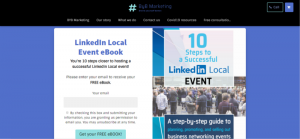I was on a coaching call with a salesperson this morning. Below is the pitch transcribed just as it was delivered to me. Can you spot the problem?
Salesperson: “I understand that you currently have a very manual order process with a lot of errors and your reps are spending too much of their time fixing them to adequately reflect customer’s needs so what we’re going to show you today is how our solution can improve your order accuracy by as much as 90% and save you over $ 200,000 a year and improve customer satisfaction as well…”
WOWZA!
A plethora of ideas in this monologue (I counted eight!), but barely a comma to be heard. Much less a period!
While the ability to talk without taking a breath for this long is impressive, this type of verbal assault is not a great experience for your customer. They either tune out or take very little away from the call. Unfortunately this trend is rampant among sellers, especially those who have transitioned from face to-face meetings to video calls.
Video calls have become a virtual punctuation-free zone: one thought, proceeded by another, strung together with an occasional comma or transition word, like: so, and, but, while, or then.
Why can’t sellers stop talking on video sales calls?
Here’s what they tell me:
- “Customers are not engaging with me on video.” True. People are much more passive on virtual calls and less likely to engage. But when sellers fill in those spaces normally filled by the customer with their own words, it simply reinforces the customer’s passivity.
- “I can’t see my customer’s reactions.” Often times customers don’t have their video on or it’s difficult to see them when trying to make eye contact. But rushing through your pitch implies you are assuming their reaction is unfavorable, when that may very well not be the case.
- “My customer looks bored.” It’s easy to mistake that blank video face that most people wear on video calls as boredom or disinterest. But again, this assumption is often incorrect (Have you ever watched your own listening face – even when it’s something you’re interested in?) And, this assumption can quickly turn into a self-fulfilling prophecy as customers will tune out if you don’t invite them in.
So, what’s the solution?
Speak with Punctuation
The purpose of punctuation is to make the content clear to the reader or listener. While punctuation is often slightly different for spoken content, it still needs to be included (either consciously or subconsciously) to ensure comprehension, maintain attention, and allow for feedback. Here are a few ways to speak with punctuation:
- Verbal periods: When you’re finished with one thought, visualize a period at the end of it and pause for a few seconds before continuing. This allows the impact of what you said stick before you move on to the next thought. It also gives your customer a chance to either a) respond verbally, or b) respond internally. Both are important. And here’s a bonus: Your prospect may actually tell you something you wouldn’t have otherwise found out if you’d just kept talking!
- Verbal commas. Delivering a number of ideas in a list? Taking a very short pause between each and using your voice to differentiate between them will help your audience process and retain what you’re saying.
- Verbal Question Marks: Too many questions go unanswered simply because they don’t sound like questions. By mentally putting a question mark at the end of your sentence you should end on an uptick – which indicates you expect an answer.
Stop talking non-stop on video sales calls. By adding some punctuation you’ll make those key points really pop, give your customer a chance to process or respond, and keep them engaged. Despite the blank video face!
Digital & Social Articles on Business 2 Community
(34)




